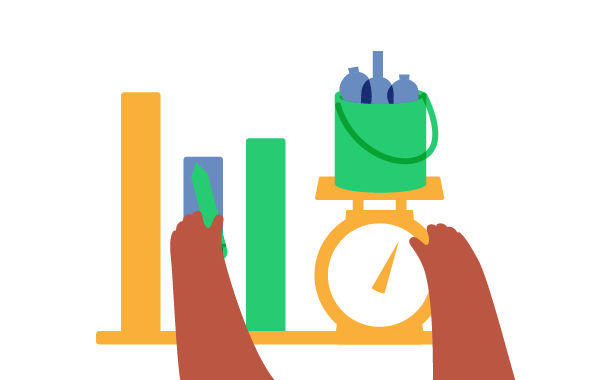Water Pollution Science Experiment
This activity will teach you about proper waste disposal.
What to do
- Collect the materials listed below and follow the directions to complete this great experiment about how water pollution can affect the environment.
- Grades PreK/K/1 and Grades 2-3 should ask an adult to help if doing this at home.
What you need
- Large Plastic Bin/Tub
- Water
- Plastic Ocean Animals (or other toys if you don’t have animals)
- Seashells
- Plastic Toy Boat
- Cocoa Powder
- Vegetable Oil
- Plastic Bags
- Coffee Grounds
- Sponge
- Cotton Balls
- Dish Soap
- Small Scrub Brush (old toothbrush)
- 3 Bottles/Jars
- Coffee Filters
Directions
- Fill your large plastic bin/tub halfway with water.
- Fill one bottle/jar with a clean water sample. Set aside.
- Add plastic ocean animals, seashells and a plastic toy boat to the sensory bin.
- Play with the toys in the clean water and have fun!
- Mix a bit of cocoa powder and vegetable oil in a bowl. Dribble the oil into the water, on the boat and on the animals.
- What has happened to the water? It’s no longer as clear or clean. What happens when oil spills into our oceans?
- Drop a few spoonfuls of coffee grounds (pollution) into the water. Now it’s really starting to get gross! The water colour is stained and it has become quite cloudy.
- Shred plastic shopping bags. Add the plastic to the water and stir it around.
- The plastic has really polluted the water. It’s around the animals’ necks, arms and legs. What happens when an animal gets stuck in plastic waste?
- Fill the second bottle/jar with some polluted water. Set aside.
- Remove animals from the bin. Untangle any plastic from the animals.
- Use cotton balls and sponges to try and absorb the oil that has spilled into the water.
- Use dish soap and a small scrub brush to clean the oil off the plastic animals.
- Place a coffee filter into the top of the third bottle/jar. Carefully pour some of the polluted water through the filter into the bottle/jar. Remove the coffee filter and set aside.
- Place the clean water sample, the polluted water sample and the filtered water sample. What do you see? Did your attempt to clean the polluted water with the coffee filter work?
Extra resources


